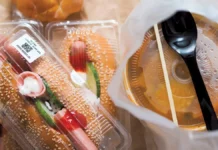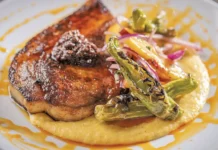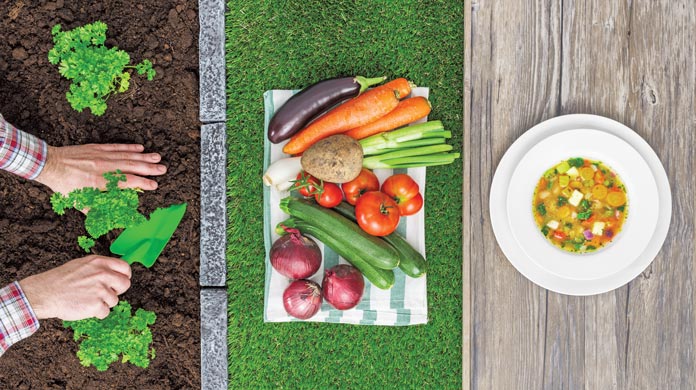
Article by Marie Gorman, quench
At food and beverage marketing agency quench, we’ve been forecasting food and beverage industry trends since 2009. This annual endeavor provides us with deeper insights, experience and savvy to help clients who are facing unprecedented challenges to make a market impact.
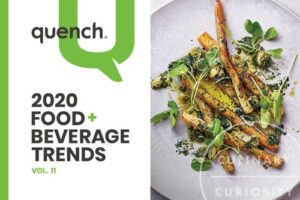 Our process requires a full year of researching, writing and reviewing reports with our industry sources and connections. We focus on emerging trends, and each of the five “macro” trends we highlight each year is substantiated by three “micro” trends.
Our process requires a full year of researching, writing and reviewing reports with our industry sources and connections. We focus on emerging trends, and each of the five “macro” trends we highlight each year is substantiated by three “micro” trends.
In our new quench 2020 Food & Beverage Trends Report, we foresee these five trends making a significant impact on the future of the industry:
-
- Hypercustomization
- Back to Nature
- Altruistic Food
- Disaster Farming
- Restaurants Without Restaurants
We’ve provided a look into three of these trends, below.
Back to Nature
Everyone, from restaurants to grocery stores, is beginning to grow their products in-house, as consumers go to unusual lengths for food that is as natural – and local – as possible. Restaurants that grow their own produce topped the National Restaurant Association’s “What’s Hot 2019 Culinary Forecast,” as restaurateurs invest in on-site, multi-acre farms and gardens. Kroger’s partnership with Infarm allows shoppers to pick their own in-store lettuce and kale, and popular restaurants like Croc’s 19th St. Bistro in Virginia Beach, VA and Blenheim Restaurant in New York City’s West Village grow their own proprietary blends of greens at on-site gardens and rooftop enclosures.
Many weeds that landowners battle in their lawns are now the same ingredients appearing on restaurant menus, in CSA boxes and at the market. Also known as “field to table” and “woods to table,” the popularity of wild food is being driven by consumers looking for unique flavors in their immediate community. Uncommon herbs such as dandelion greens and lemon balm mix with nutritional powerhouses like unusual seeds (such as lotus and water lily seeds) and mushrooms as sought-after additives in snacks, desserts and functional beverages.
Disaster Farming
The world’s food system is desperate for an overhaul: Research shows that the planet today can only grow enough fresh fruits and vegetables to feed two-thirds of the current global population — 7.5 billion people — and experts predict that the global population will reach almost 10 billion in 2050. Companies and consumers alike will need to embrace new forms of production – and produce – to develop the capacity to continue to support the ever-expanding global population.
Indoor farming serves as one of the primary means of new production: Over the next 10 years, researchers predict that indoor farming will account for half of the industry’s leafy green production. Category leaders including 80 Acres Farms — the first fully automated indoor farm in North America – and Living Greens Farm utilize innovative designs that allow a singular, indoor acre to produce the equivalent of hundreds of conventional acres.
While indoor farming focuses on vegetables, precision fermentation provides an alternative to traditional animal proteins. This process produces animal proteins more efficiently via microbes and maintains the potential to replace substances ranging from gelatin to collagen to eggs. One such company, Air Protein, converts carbon dioxide into complete proteins, using single-celled organisms capable of production in any environment. The company plans to commercialize consumer products, featuring its complete proteins as a whole-food ingredient. Other companies, such as Prime Roots and Sustainable Bioproducts, have taken a different approach by experimenting with edible fungal strains.
Innovation molded to our current system may not be enough: Three-quarters of the world’s food comes from just 12 plants and five animal species, and fostering an appreciation for a wider variety of animal proteins, produce and grains could help expand the world’s limited food supply. Breeders of new plants use genome editing to emphasize key character traits such as sustainability, yield and disease resistance. Blue Hill and Row 7 Seed Company work alongside breeders, farmers, seedsmen and chefs to develop these new varieties of vegetables. Produce from Row 7 – like their koginut squash – has been featured in salads sold at restaurants including Sweetgreen, a popular fast casual chain.
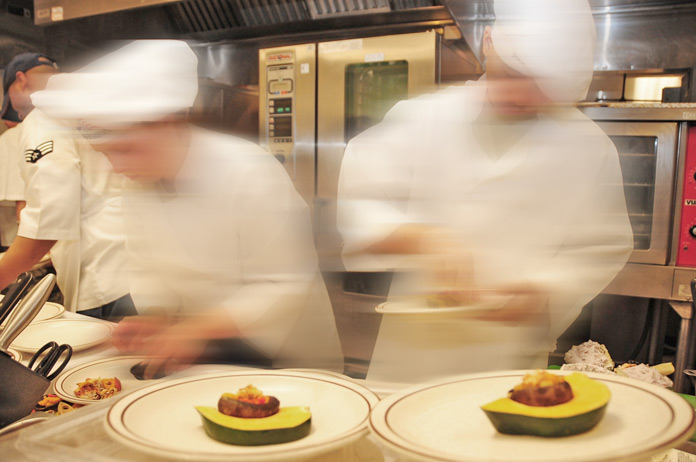 Restaurants Without Restaurants
Restaurants Without Restaurants
Ecommerce and digital ordering have changed the shape of the restaurant industry. Experts consider the current industry value at $82 billion (2018); however, some predictions claim that amount will triple in 2020. Already, off-premises dining — delivery, takeout, and drive-thru orders — accounts for 60 percent of restaurant occasions.
These shifts are pushing restaurants to design with an eye for delivery, with menu redesigns, alternative takeout packaging and separate kitchens dedicated to mobile orders. Others are going even further, eliminating the restaurant altogether. Ghost restaurants – restaurants with no brick-and-mortar presence – allow existing companies to expand and create new supply locations and new restaurateurs to circumvent the traditional overhead associated with opening a new
location.
Wendy’s plans for ghost kitchens serves as a significant part of the chain’s 2020 expansion strategy, and Uber Eats already maintains more than 1,600 virtual restaurants in 300 cities.
Even QSRs and grocery stores are getting in on the movement and considering alternative means of providing a faster, more seamless experience as consumers’ cravings for – and expectations of – convenience grow stronger and stronger.
Consumers no longer need to shop in-store in order to receive their meals or groceries. KFC piloted its first-ever drive-through concept store, and Walmart, following on the heels of its significant success in the grocery space, introduced its InHome grocery delivery membership program.
To request a copy of the full 2020 quench Food & Beverage Trends report, Vol. 11, visit quenchagency.com/trends
Marie Gorman is Account Planner for quench, and lead researcher for the agency’s annual quench Food & Beverage Trends Report. As a full-service marketing agency dedicated exclusively to the food & beverage category, quench has a proprietary approach to food and beverage innovation, research and development. Clients include StarKist, Sun-Maid Growers of California, Labatt Blue, Seagram’s, The Hershey Company and Del Monte Fresh Produce.


















